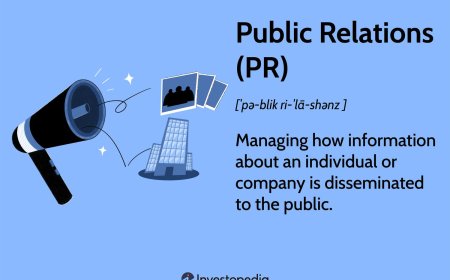Understanding RAG Platforms and the Role of Vector Databases in AI-Powered Search
rag platform, vector databases for rag

In the era of advanced AI systems, delivering accurate, contextual, and up-to-date responses is critical. One of the most groundbreaking approaches that has gained traction in recent years is the Retrieval-Augmented Generation (RAG) platform. This approach bridges the gap between static, pre-trained language models and the ever-changing nature of real-world information. At the core of a robust RAG platform lies a key component vector databases for RAG. Together, they are redefining how organizations approach knowledge retrieval, contextual understanding, and response generation in AI systems.
What is a RAG Platform?
A RAG platform is a framework that combines two AI solution capabilities: information retrieval and language generation. Unlike traditional models that generate answers based solely on their training data, a RAG-based system first searches a knowledge base for relevant information and then uses that information to generate a response. This ensures the AIs outputs are both accurate and contextually relevant.
Heres how a typical RAG pipeline works:
-
Query Ingestion: A user inputs a query.
-
Retrieval Step: The system uses semantic search to retrieve relevant documents or data chunks from a knowledge base.
-
Augmented Generation: The retrieved data is passed into a language model, which generates a natural-language answer incorporating the most relevant information.
This process makes the RAG platform particularly useful for domains where accuracy and real-time data are crucial, such as healthcare, finance, legal services, technical support, and enterprise knowledge management.
Why RAG Matters in Modern AI Workflows
Most language models, no matter how large, have a fixed knowledge base tied to their training data. This can quickly become outdated or incomplete. By integrating real-time data retrieval into the generation process, RAG platforms eliminate this limitation and unlock several advantages:
-
Dynamic knowledge access: The model can fetch the latest data, ensuring responses are timely and accurate.
-
Reduced hallucination: By grounding responses in real documents, the chances of fabricated or misleading outputs are significantly reduced.
-
Custom knowledge bases: Enterprises can feed proprietary or domain-specific data into the system, creating personalized and secure AI workflows.
-
Efficient scaling: The model doesnt need to be retrained for every new dataset; updates can simply be added to the knowledge base.
The Critical Role of Vector Databases for RAG
The retrieval component in a RAG platform relies heavily on the performance of the underlying vector databases for RAG. These databases are designed to handle high-dimensional embeddings numerical representations of text, images, or other data and perform fast similarity searches.
In a typical setup, text documents are pre-processed and converted into vectors using embedding models. These vectors are stored in a vector database, which can quickly search for the most similar embeddings in response to a new query.
Heres why vector databases are indispensable in a RAG platform:
1. Semantic Search Capabilities
Unlike keyword-based search engines, vector databases enable semantic search. This means they can retrieve documents based on meaning rather than exact match. For instance, a user searching for climate impact of fossil fuels might get results that include greenhouse gases from coal or carbon emissions from oil, thanks to semantic matching.
2. Scalability and Performance
RAG systems may need to search through millions (or billions) of vectors in real time. Vector databases are optimized for high-speed approximate nearest neighbor (ANN) searches, ensuring rapid retrieval with minimal latency. This is crucial for applications requiring real-time interaction, such as chatbots or AI customer support systems.
3. Support for Metadata Filtering
Advanced vector databases allow filtering results not just by vector similarity, but also by metadata such as date, source, document type, etc. This adds a valuable layer of control and precision to the retrieval process.
4. Continuous Updates and Flexibility
In rapidly evolving environments, its important to continuously ingest new data and remove outdated information. Vector databases support efficient updates and deletions, making them ideal for dynamic knowledge sources in a RAG pipeline.
Building a Robust RAG Stack: Key Considerations
While the concept of RAG is relatively straightforward, deploying a high-performing system involves multiple architectural decisions. Here are some things to keep in mind:
-
Embedding quality: The quality of the vector representations directly impacts retrieval performance. Choose an embedding model suited to your domain.
-
Chunking strategy: Breaking documents into the right-sized chunks helps ensure relevant content is retrieved without losing context.
-
Database tuning: Parameters like distance metrics (cosine, dot product, etc.), indexing methods (HNSW, IVF), and batch sizes must be optimized for speed and accuracy.
-
Security and compliance: For enterprise-grade deployments, ensure your vector database supports access control, encryption, and audit logging.
Future of RAG Platforms with Vector Databases
As organizations continue to look for smarter AI systems that can interact naturally, answer complex queries, and remain accurate over time, RAG platforms will become the go-to architecture. Innovations in vector search, hybrid retrieval techniques (combining sparse and dense search), and multi-modal embeddings (text + image + audio) will further expand the capabilities of these systems.
Moreover, with the rise of open-source and customizable tools in this space, smaller teams can now build and fine-tune RAG platforms tailored to specific business goals all while maintaining control over their data and infrastructure.
Final Thoughts
The combination of RAG platforms and vector databases for RAG represents a major step forward in building AI systems that are not just intelligent, but also grounded, accurate, and adaptable. Whether youre developing a chatbot, search engine, virtual assistant, or knowledge management tool, this architecture offers a powerful and future-proof foundation.
Organizations that invest in RAG today will not only enhance their AI capabilities but also set themselves apart in a world increasingly driven by information and intelligence.



































